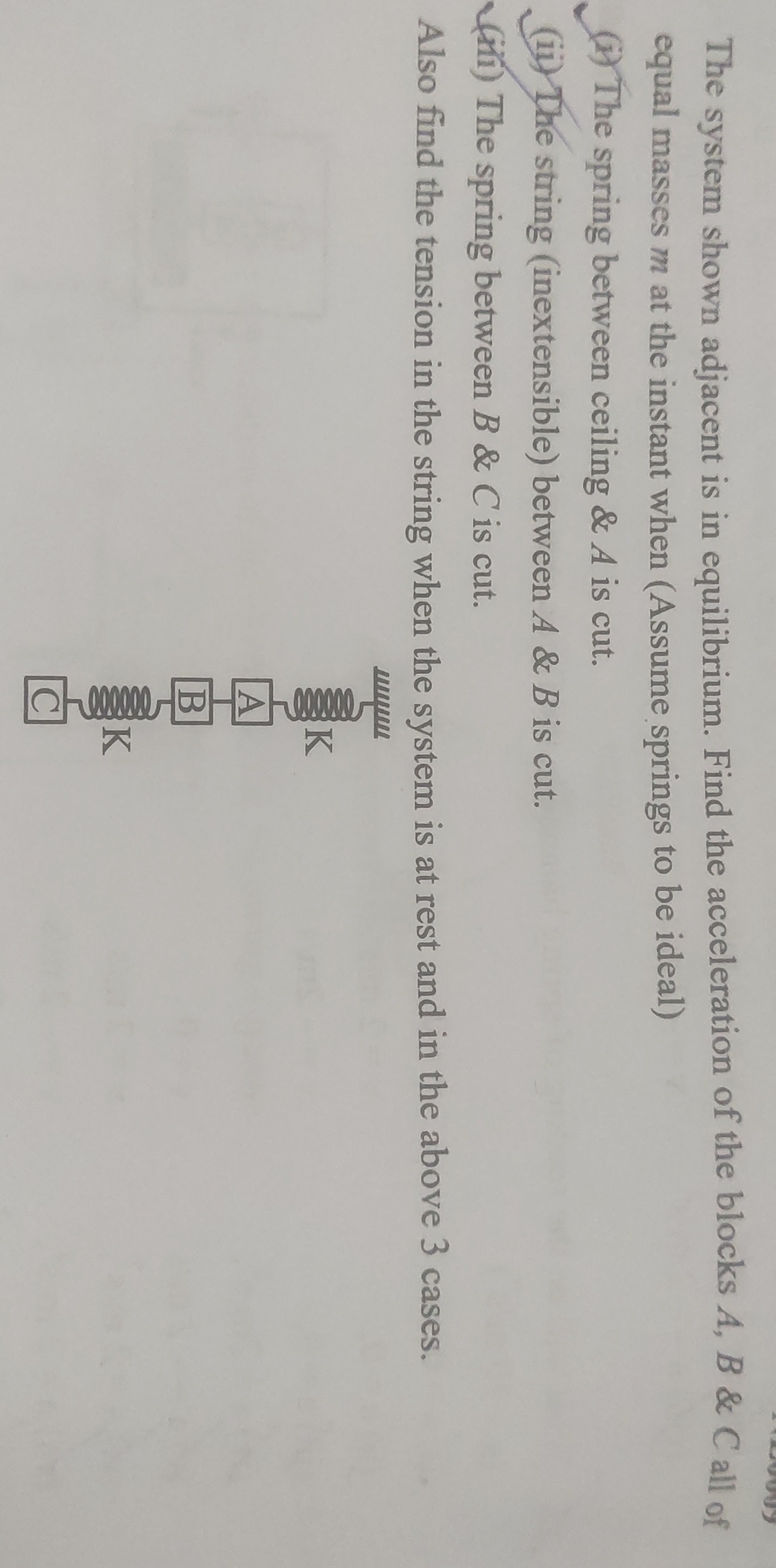Question
Question: The system shown adjacent is in equilibrium. Find the acceleration of the blocks A, B & C all of equ...
The system shown adjacent is in equilibrium. Find the acceleration of the blocks A, B & C all of equal masses m at the instant when (Assume springs to be ideal)
(i) The spring between ceiling & A is cut. (ii) The string (inextensible) between A & B is cut. (iii) The spring between B & C is cut.
Also find the tension in the string when the system is at rest and in the above 3 cases.

When the system is at rest (equilibrium):
- Acceleration of A, B, C: aA=aB=aC=0
- Tension in the string between A & B: T=2mg
(i) The spring between ceiling & A is cut:
- Acceleration of A: aA=g (downwards)
- Acceleration of B: aB=2g (downwards)
- Acceleration of C: aC=0
- Tension in the string between A & B: T′=0
(ii) The string (inextensible) between A & B is cut:
- Acceleration of A: aA=2g (upwards)
- Acceleration of B: aB=2g (downwards)
- Acceleration of C: aC=0
- Tension in the string between A & B: T′=0
(iii) The spring between B & C is cut:
- Acceleration of A: aA=g/2 (upwards)
- Acceleration of B: aB=g/2 (upwards)
- Acceleration of C: aC=g (downwards)
- Tension in the string between A & B: T′=23mg
Solution
To solve this problem, we need to analyze the forces acting on each block in the initial equilibrium state and then determine how the accelerations and tensions change when different components are cut. The key is to understand that cutting a string results in instantaneous change of tension to zero, while the force in a spring does not change instantaneously unless the spring itself is cut.
1. Initial Equilibrium State Analysis:
- Block C: Fs2=mg
- Block B: T=2mg
- Block A: Fs1=3mg
2. Scenarios After Cutting:
-
(i) Spring between ceiling & A is cut:
- aA=g (downwards)
- aB=2g (downwards)
- aC=0
- T′=0
-
(ii) String between A & B is cut:
- aA=2g (upwards)
- aB=2g (downwards)
- aC=0
- T′=0
-
(iii) Spring between B & C is cut:
- aA=g/2 (upwards)
- aB=g/2 (upwards)
- aC=g (downwards)
- T′=23mg
By carefully considering the forces and applying Newton's laws, we can determine the accelerations and tensions in each scenario.
